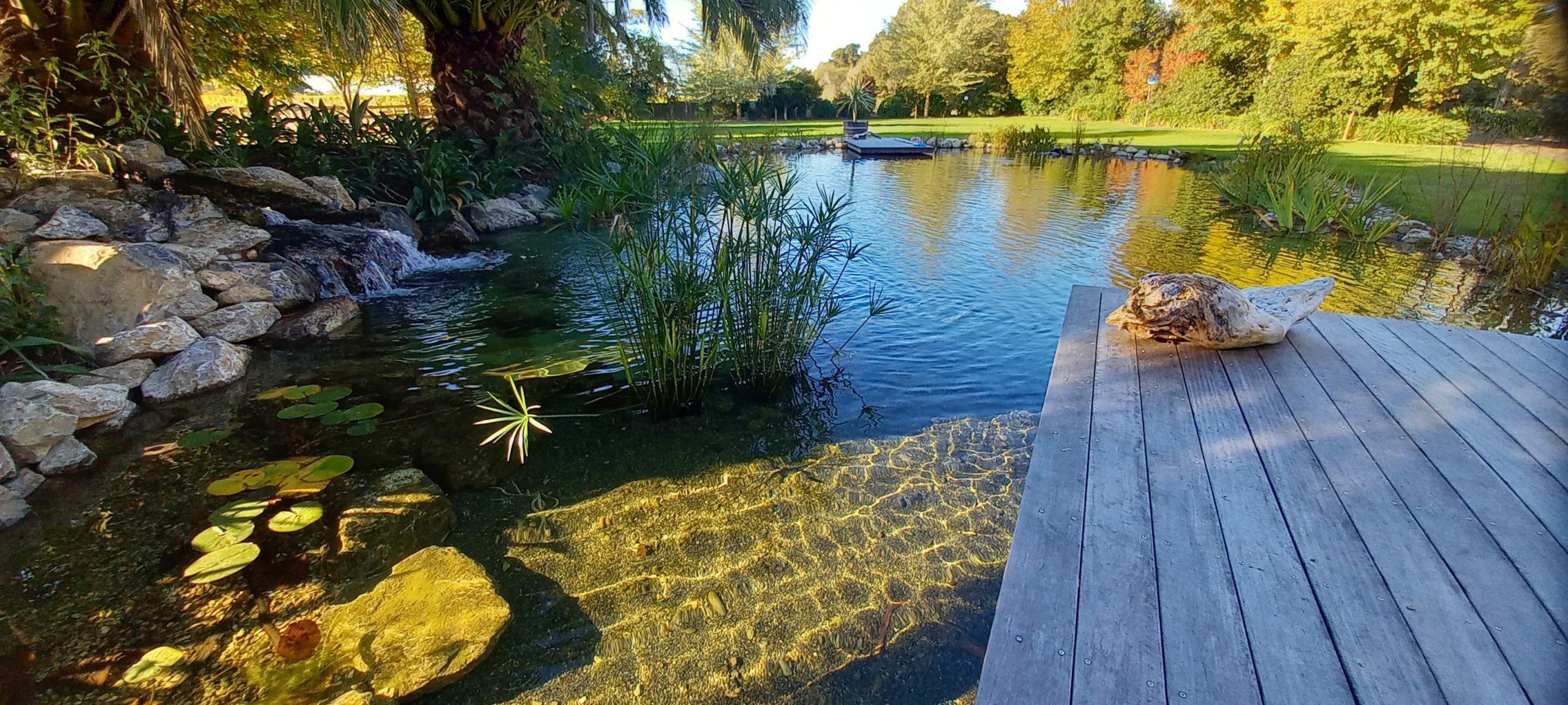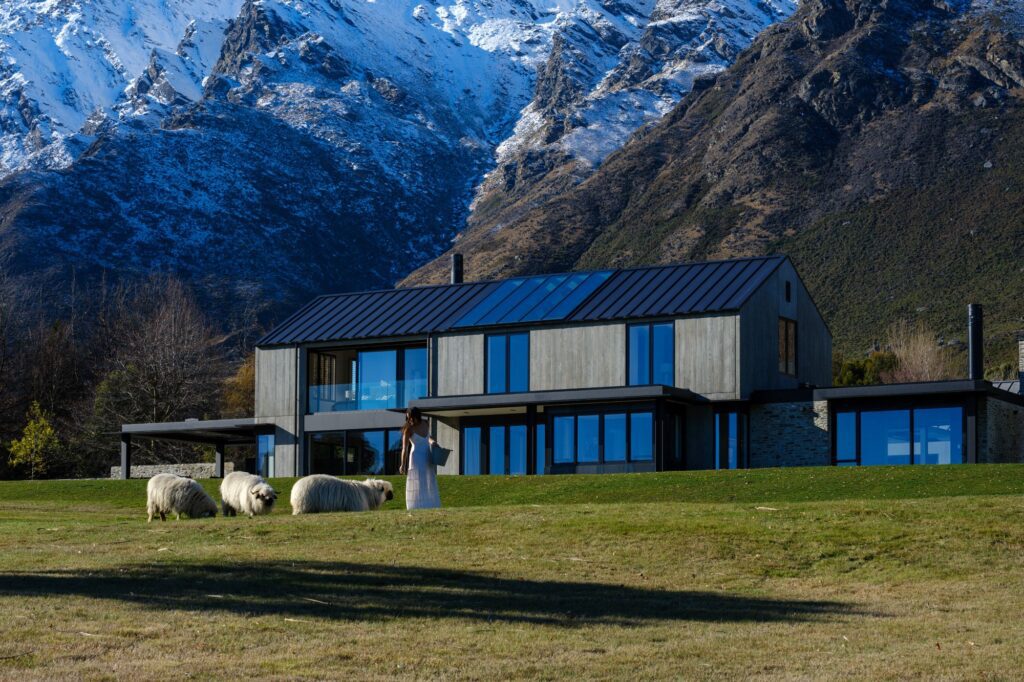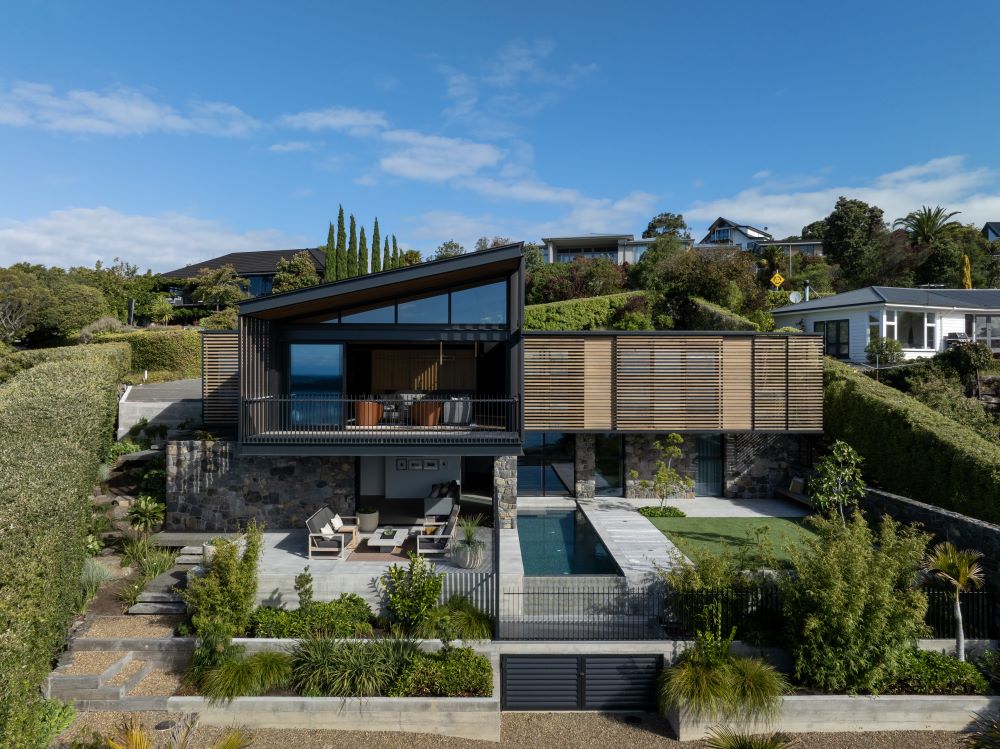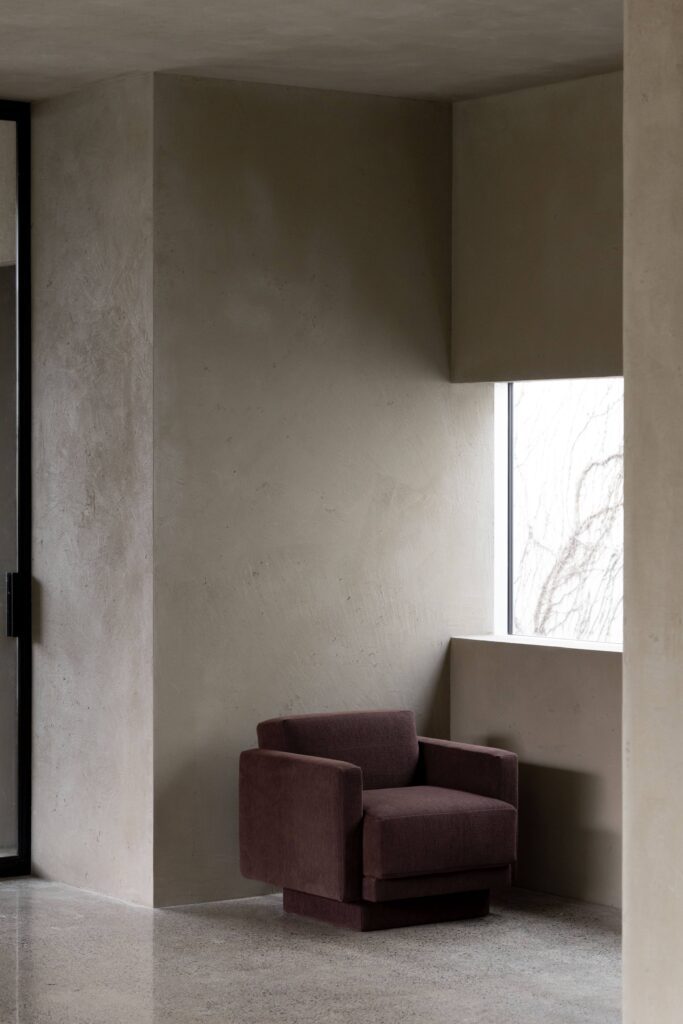We spoke to landscape architect Alex Traut of Natural Pools NZ about the concept of swimming in living water, the environmental impact, and filtering water using nature.
HOME: What is the difference between a living pool and a chlorinated one?
Alex Traut: Natural pools are characterised by their simple and natural design, gentle and rounded forms, and pool edges that merge with the surroundings. Natural pools incorporate a regeneration zone that cleans and purifies the water without the use of chemicals. The regeneration zone is given over to aquatic plants, which not only oxygenate the water but, along with microorganisms, act as living filters and organic cleansers, naturally and continually filtering the water through their root system.

While there is a submerged separating wall dividing the swimming area from the regeneration zone, the water freely flows between these areas and creates an organic unity of design and function.
Living pools operate in a similar fashion; however, the concept of the ‘Living Pool’ was originally created by a company in Vienna: Biotop. It’s called a living pool because the water is actually living water. It contains a rich variety of beneficial bacteria — much like the expensive probiotic supplements that you purchase at a health store and that are known to balance your gut flora.
Chlorinated water is dead, flat water, and many people find that they are sensitive to this harsh chemical, or, after swimming, their eyes are sore and dry and their nose streams or is blocked. Eczema and other skin conditions are also commonly experienced by those who regularly swim in a chlorinated pool. For some people, even saltwater pools create skin sensitivity.
Visually, living pools are more akin to traditional swimming pools than natural pools are but they, too, don’t require any chlorine or other chemicals. Instead of the regeneration zone required in natural pools, with its live flora and fauna, a living pool incorporates an underground bio compact filter and a specially developed phosphorous filter, and together these provide biological and physiological purification of the water, continuously keeping it clear and alive. The final element of the living pool system is an automated pool cover that not only eliminates light – thereby reducing growth of algae – but also acts as a safety feature and increases water temperature to prolong the swimming season.

Both living pools and natural pools are totally chemical free, but a living pool is generally seen as the more contemporary option — square or rectangular, it can be created in any size and is lined with a soft but sturdy liner in stylish colours that give either the bright blue, grey, grey/green, or black effect.
Natural pools can be created in more organic shapes that give the client the experience of a natural water feature in the garden that can double as a beautiful swimming pond, complete with wetland and wildlife — aquatic plants such as water lilies and reeds that attract birds and dragonflies — at its edges.
H: Are there many natural and living pools in New Zealand? The concept is still relatively new in Aotearoa; how do you think people are responding to it?
AT: We’ve now done about 50 projects designing and installing living and natural pools all over New Zealand, from Glenorchy to Auckland. Most of them are living pools, without the plants, so I think people are really interested in the concept and the fact that these pools don’t impact the environment like traditional swimming pools generally do.
One of Alex’s projects is explored in depth in the August/September issue of HOME – on sale 2 August 2021 from anywhere good magazines are sold, or online – a living pool designed for underwater photographer and environmental activist Jose G. Cano. View some of Cano’s images (below) from a recent collection entitled Drowning in Plastic.




